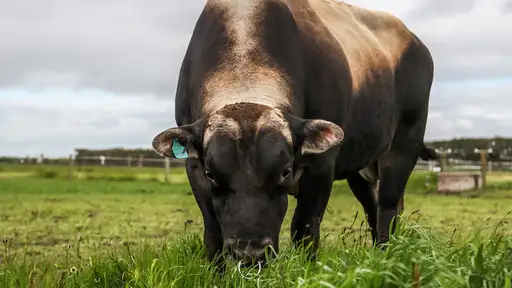Learn more about going no bull
Discuss with your LIC rep.
Switching to all artificial breeding (AB) for the whole mating period can be beneficial, but may not be suited to everyone.
Before you make the decision, consider these key points and tips on how to get the best results.
No bull checklist
Use the no bull checklist below to check if your herd is suitable for going all AB.
If you don’t meet all of the criteria, you can still adopt all AB, but you will need a good solid plan in place to mitigate the criteria you don’t meet. This will set you and your herd up for a successful all AB mating.
Reproduction performance is at national average or higher
- 6-week in-calf rate above 65%
- 3-week submission rate of 80% or higher
- conception rate of 50% or higher
- Fewer than 20% short returns
- Fewer than 15% non-cycling cow (NCC) treatments used
Your herd is healthy and primed to have a successful mating
- BVD free (BVD can have strong reproductive performance consequences)
- No increase in cow health problems through calving (e.g. milk fever and mastitis)
- First calvers have reached their target liveweight for calving
- No increase in late calvers
You have the skills and staff to carry out prolonged heat detection
- All AB makes accurate heat detection even more critical. You need the skills and the staff to carry out heat detection for 10-12 weeks.
Making the decision
Seek advice
- Talk to your farm advisor or your LIC representative.
- Talk to a farmer in your area who has done all AB before. Their experiences may help you confirm whether going all AB is right for you.
Communicate
- Once you decide to go all AB, you must communicate this to all of those that are involved in making your plan happen - your vet, your semen supplier, your AB tech, your rural professionals and your team on farm.
- Communicate your plan as far ahead of mating as you can so all of those providers have time to plan to make the execution of your mating period as smooth as possible.
Tips for going all AB
Focus on heat detection
- Attend a heat detection training session prior to the start of mating
- Do pre-mating heats to gather insights on how well cows are cycling before mating starts and brush up your heat detection skills/train staff
- Confirm a heat detection plan with your staff before mating starts. Consider how you’ll minimise the risk of heat detection fatigue (e.g. a roster or a Protrack Heat camera), and a backup plan for how you’ll do heat detection if your main heat detector is suddenly unavailable
- Use two different heat detection aids (one can be tail-paint) for the whole of mating, or at least from week 3 onwards.
- Routinely monitor heat detection indicators to identify any potential shortcomings early and address them. An early indicator is the “Early indicator - repeat matings” graph in MINDA LIVE.
Plan
- Put a plan together to minimise the risk periods where your herd historically does not get in-calf well e.g. after week 3 of mating
- Plan how you’ll deal with non-cyclers (pre- matings heats will give you visibility to make a decision before mating start date).
- Create an early aged pregnancy testing plan
- Ensure every cow gets an early aged pregnancy test result recorded in MINDA. This data will help you analyse performance and identify opportunities for improvement next season.
Support
We have a range of services and resources to help you ensure mating goes well.
Reproduction resources
- Reproduction calendar
- Ahead of the Herd tool
- When to scan calculator
- Our reproduction page also has articles with the latest repro tips and info
Other resources
- Field Assist service can organise your herd records
- DairyNZ website - biosecurity focus at mating
Opportunities to keep in mind
If you are going all AB, you could also consider:
- Using SGL Dairy® semen to condense calving spread, increase days in milk and give cows more time to recover before mating.
- Using beef straws to create a new revenue stream.
If you decide that going all AB is not suitable for you this year, ensure you have a solid plan for how you intend to run your natural mating period.
You’ll need to decide how many bulls you will need, when you are going to bring them on farm, and how you will reduce any biosecurity risks.
DairyNZ Advice for managing service bulls
Bull buying and leasing checklist will help you ensure you source bulls that are fit for purpose.
Learn more about going no bull
Discuss with your LIC rep.




